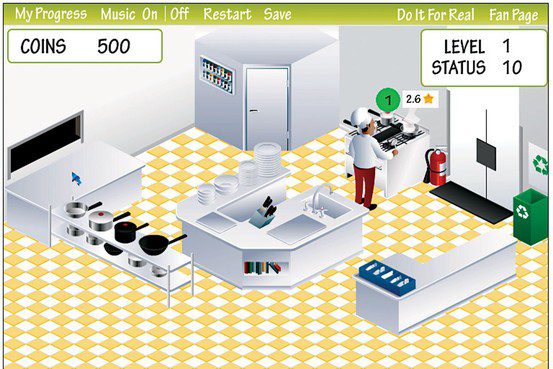In my last post, we discussed how gamification, play and game mechanics can be used in business to increase employee engagement and innovation. This post will focus on businesses that have successfully implemented games to meet their unique goals in three different industries: hospitality, IT and pharmaceuticals.
Educating a Future Generation of Hoteliers Using Play
Marriott chose to proactively reach out to Millennials (the generation born between 1981-2001) by creating a game that allows users to see what it’s really like to run a hotel. They want to encourage users to consider hospitality as a career by giving them a glimpse at what daily operations are like. Having been an hotelier and restaurateur myself for over 15 years, I could have used this game in high school!

The goal of the game is to educate a younger generation about the realities of the hospitality industry—to plant a seed in what could be a future generation of Marriott employees. Susan Strayer, human resources branding expert at Marriott, states that it’s neither a recruitment tool nor a way to weed through possible candidates. To Marriott, this game is a marketing strategy.
Increasing Communication and Collaboration in IT
IT company NTT Data, INC is a 7,000-person operation dispersed across 35 countries. After several mergers, they required a way for employees to communicate and collaborate regardless of geography. Socially, their new platform was originally launched as an enterprise portal, but NTT had difficulty getting employees to join and engage with one another.
After adding leaderboards, challenges, rewards and social media however, users increased 10-fold. Rewards included material things such as iPods but also meetings with top company executives. Ultimately this encouraged employees to contribute thoughts, problems and solutions in order to spur collaboration and generate new ideas and initiatives. Not only was voluntary collaboration achieved; employees liked it as well!
Crowdsourcing to Problem Solve in Pharmaceuticals
Foldit, pointed out by P.J. Rey in PJ Rey’s Sociology Blog Feed, has integrated gaming in a phenomenal way. Their website explains the purpose of the game as, “We’re collecting data to find out if humans’ pattern-recognition and puzzle-solving abilities make them more efficient than existing computer programs at pattern-folding tasks.” The ultimate goal was to predict currently unknown protein structures.
Foldit built levels of puzzles to allow users to familiarize themselves with the process, established clear guidelines, and incentivized users to collaborate through ranking their contributions. Though the rewards are not necessarily tangible, the intangible “for the greater good of humanity” seems to hold enough bragging rights and reward in and of itself. In 2011 users solved the protein structure of a virus similar to AIDS within three weeks.

How Can You Use Games in Your Business?
All three of the games I mentioned were built for a specific purpose, not just random collaboration. Although free play is good, gamification is in fact structured play, which is what makes it purposeful. The rules that are missing are just the normative human rules that inhibit this type of interaction in the office – spatial limits, blurry lines of how your office relationships should function and elimination of hierarchies based on title or tenure.
Think about your workplace and how you can implement game elements to achieve a specific purpose. Are there elements of your work that are already following this game-like structure? Are there places or ways where you think it could be integrated successfully?
Photo credit: VFS Digital Design






 Gamification of Learning with Karl Kapp
Gamification of Learning with Karl Kapp